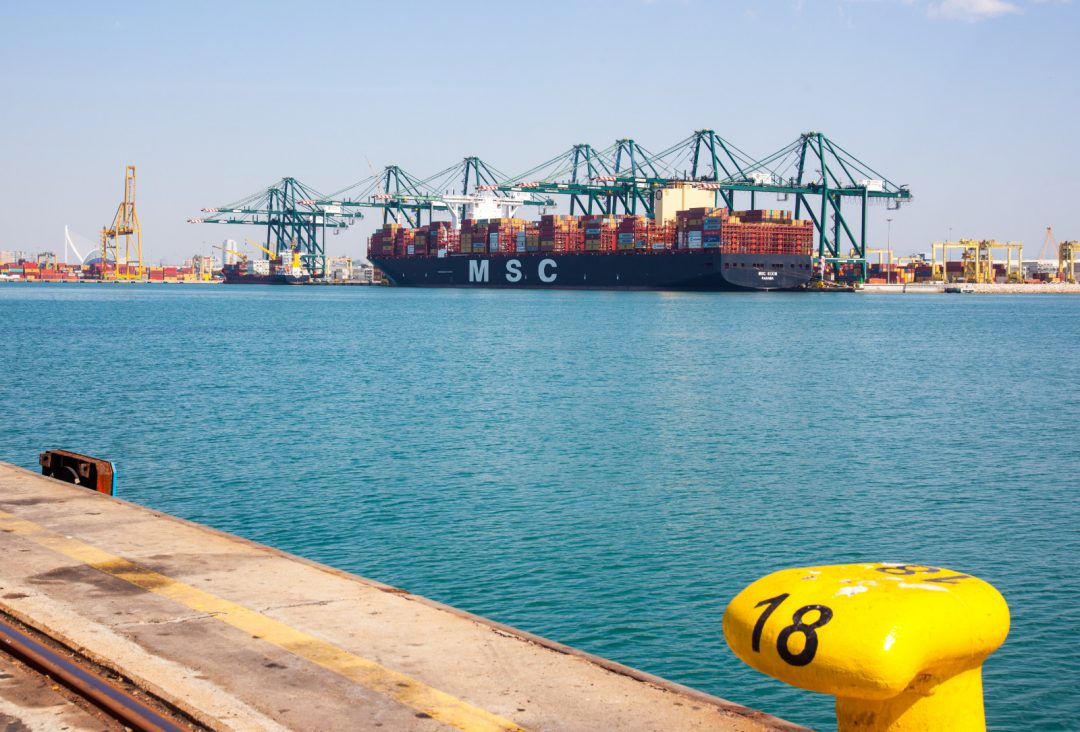The Valencia Containerised Freight Index registers for the third consecutive month a decrease in the cost of export freight from Valenciaport. Specifically, in the month of November the fall was 6.28% compared to October, placing the Index at 4,146.26 points, thus accumulating a growth of 314.63% since the beginning of the series in 2018. The behaviour shown by all the areas that make up the VCFI has been downward, highlighting the drop in freight rates from the Indian Subcontinent, the USA and Canada, the Far East and the Middle East.
At the same time, the global supply of vessels has been boosted by both the fall in congestion levels and the pace of vessel deliveries. Thus, and in relation to the capacity on offer, according to data provided by the consultancy Alphaliner, the count of the fleet of inactive containerships during November has increased with respect to the previous month. Consequently, at the end of November, 93 vessels were idle, representing a total of 565,443 TEU, representing 2.2% of the total active fleet, as well as 5.3% of the total fleet.
It also highlights the fact that, even though pre-pandemic figures have not yet been reached, congestion levels are showing a downward trend. According to data provided by the consultancy firm Linerlytica for the month of November, port congestion in the global maritime market was 31% for North Asia, 29% in North America and 10% in Northern Europe.
In addition, and according to information provided by Linerlytica in mid-November, the number of ships waiting at anchor in Chinese ports would have decreased even more if it were not for nine ships of more than 10,000 TEU currently idle in various locations in North Asia, as well as the effect of typhoon Nalgae on Chinese ports in the South at the beginning of the month.
Regarding the US ports, the East Coast congestion level increased slightly in the middle of the month due to hurricane Nicole. Even so, the queue of ships at the ports of Los Angeles and Long Beach has reached the lowest level in more than two years. The situation in Europe has remained unchanged as the strike in Antwerp in early November caused only minimal delays.
Another factor conditioning supply in the maritime market is the energy markets. Thus, during the month of November the average price of a barrel of Brent crude oil was $92.44 compared with $93.33 in October, which implies a slight drop of 0.95%. Similarly, marine fuels in general have fluctuated downwards. For this purpose, the price of bunkering (refuelling of ships at sea) in the 20 main ports of the world has been considered, according to the data provided by Ship&Bunker. Thus, the price of VLSFO (Very Low Sulphur Fuel Oil) has gone from 739.5$ in October to 712.8$ in November, representing a decrease of 3.6%.
VCFI Western Mediterranean
As for the Western Mediterranean sub-index, a decrease of -1.62% is observed with respect to the previous month, standing at 2,142.95 points, and accumulating a growth of 114.30% since the beginning of the series in 2018. Once again, the specific case of Algeria stands out, where the trade agreement that the Algerian government has signed with Spain is still at a standstill. For their part, exports from Valenciaport with Morocco and Tunisia have shown a slight increase compared to the previous month.
VCFI Far East
For the Far East area, a fall of -8.43% is observed, standing at 2,564.54 points, which represents an accumulated growth of 156.45% with respect to the start of the series in January 2018. However, and even though for some months now there has been a slowdown in trade with China, there has been a slight increase in the last month analysed with respect to the previous year in Valenciaport’s export flows with China.
In view of all this, and in a scenario of high uncertainty, both on a geopolitical level and in the international economy, there is no doubt that the weakness in aggregate demand, together with the existing excess supply, is giving rise to a mismatch in the supply-demand binomial for maritime transport, the main consequence of which is a decrease in the price levels of freight rates.

























